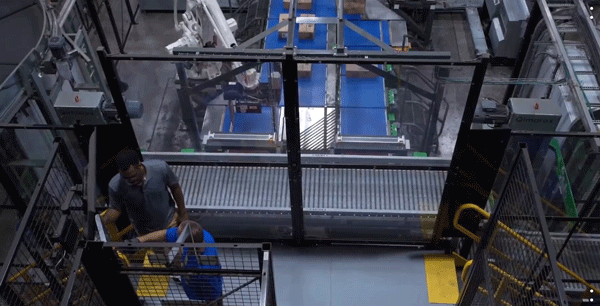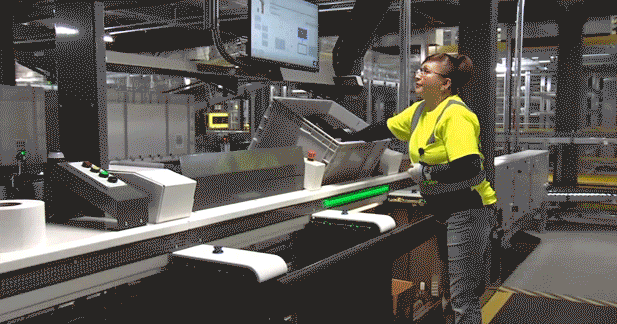Walmart Hit $100 Billion in E-commerce Sales
Walmart Inc. has released its fourth-quarter earnings, revealing a 4.9% increase in sales and a 10.9% rise in operating profit in constant currency terms. The retail giant achieved over $100 billion in global e-commerce sales, marking a significant milestone. Walmart's focus on omni-channel growth, store remodels, global expansion, and e-commerce capabilities has been well-received by the market.
Key Takeaways
- Improved e-commerce profitability within the Walmart U.S. segment, driven by:
- Reduction in e-commerce fulfillment costs.
- Densification of the last mile.
- Lowered last mile store-to-home delivery costs by approximately 20% in the past year, while shortening delivery times to same day from around 90% of stores.
- Decreased e-commerce losses by over 40% compared to the previous year.
- Experienced a 17% growth in weekly active e-commerce customers over the past year.
- Ongoing improvement in contribution margin on e-commerce.
- Densification of the network, particularly the last mile, enables spreading delivery costs over multiple customers.
- Targeting e-commerce breakeven without subsidization from additional items like advertising and fulfillment services.
- Enhanced store-level picking efficiency through initiatives such as RFID and apparel inventory management, facilitating quicker retrieval of items.
- Implementation of automation in e-commerce fulfillment centers to improve accuracy and optimize operations.
- Utilization of generative AI to enhance the search experience for customers and members, notably impacting Super Bowl search results.
- Unveiled innovative applications of AI for Sam's Club at CES, enhancing consumer-facing experiences.
- Short last mile distances are pivotal for e-commerce success, with stores fulfilling both traditional e-commerce and food delivery orders, leading to reduced delivery costs and operational losses.
- Emphasis on innovation, leveraging technology, including artificial intelligence, to streamline operations and tasks, such as inventory management, resulting in increased efficiency for associates.



















Walmart Inc. is clicking — with the retail giant topping fourth-quarter earnings projections as it hit an e-commerce milestone for the year.
The brick-and-mortar giant saw e-commerce sales jump 23 percent to more than $100 billion for the first time last year. That has Walmart gaining on Amazon, which nonetheless has a considerable lead with product sales that rose 5.3 percent to $255.9 billion last year.
But passing into a new realm — with a nine-digit sales figure — gives Walmart a new heft as it both chases Amazon and pursues its own kind of growth.
“Scale has helped a lot,” said Doug McMillon, president and chief executive officer, on a conference call with analysts.
Walmart has an omnichannel, bricks-and-clicks plan to reach shoppers, with store remodels cleaning up presentation to shoppers on the front end and the supply chain speeding delivery on the back end.
Now, it’s a matter of pulling it all together on a grand scale.
“We’re in execution mode,” McMillon said. “We’re confident in our ability to grow because we’re positioned to serve customers and members however they want to be served. We can provide value and we can provide convenience. And underneath the supply chain is changing to be more intelligent, more connected, more automated, and that’s just going to help us improve execution.”
And Walmart is getting techier still, revealing a $2.3 billion deal to buy connected home and television company Vizio on Tuesday, looking to solidify its growth as sales trends are set to moderate somewhat in the year ahead.
Fourth-quarter adjusted earnings — which factor out gains on Walmart’s own investments — came in at $1.80 a share, or 16 cents ahead of the $1.64 analysts expected, according to FactSet. Still, net income fell 12.4 percent to $5.5 billion.
Investors approved and traded shares of Walmart up 3.2 percent to $175.86 on Tuesday.
Walmart is still not making money with e-commerce, but it’s getting closer.
While the company plans for online merchandise sales to be profitable — eventually — it is on target to get there first with the help of ancillary businesses, like the growing advertising offering and fulfillment services to brands that sell on its online marketplace.
Revenues for the quarter ended Jan. 26 increased 5.7 percent to $173.4 billion, with a 23 percent gain in e-commerce sales and a 33 percent boost in the company’s advertising business, an area that’s being closely watched as a growth center.
Comparable sales in the Walmart U.S. business rose 4 percent with the company citing strength in grocery and health and wellness, which was offset by “softness in general merchandise.”
General merchandise comps were down by low-single digits with softness in home, seasonal goods and toys, attributed to deflation, or falling prices.
“Our general merchandise prices are lower than a year ago and even two years ago in some categories, which means our customers are finding value in areas like apparel and hardlines,” McMillon said.
Despite the sales declines, an increase in the number of units sold in fashion, home and hardlines pointed to market share gains and some fresh faces shopping at Walmart, including from households that make more than $100,000 annually.
Excluding the fuel business, the number of transactions logged by Walmart U.S. grew by 4.3 percent, while average ticket prices slipped 0.3 percent.
John Furner, CEO and president of Walmart U.S., said, “We’re seeing more customers. We’re seeing them more often and we’re seeing a lot of new customers….The weekly average customers in e-commerce up 17 percent is a strong number. We see more customers using same-day services and express deliveries, and that’s also across a broad range of categories.
“Having a short last mile is an important component in e-commerce and having stores be able to deliver what historically would have been an e-commerce order or a food delivery order or the combination of the two is really helping the brand,” Furner said.
For the full year, Walmart’s overall revenues gained 6 percent to $648.1 billion. The retail giant expects to keep adding to that this year, albeit at a slower pace, with net sales this year pegged for an increase of 3 percent to 4 percent.
While Walmart has gotten to that size with years — decades — so steady growth, it’s taken on a new profile in recent years with its new emphasis on e-commerce and automation and a much more agile positioning that has it pushing new ideas harder than ever.
As McMillon noted: “We already offer express delivery in the U.S. where customers can get their orders delivered fast. But what if you need something faster? There’s a pot of chili on the stove and you realize you forgot chili seasoning. Drone delivery can get it to you in 15 minutes or less. Delivering by drone isn’t new to us. Over the last two years, we’ve operated 37 hubs across seven states completing 20,000 deliveries. By the end of the year, we’ll make it available to about 75 percent of households in Dallas-Fort Worth.”
Maybe that’s how Walmart gets its next $650 billion in sales?






























